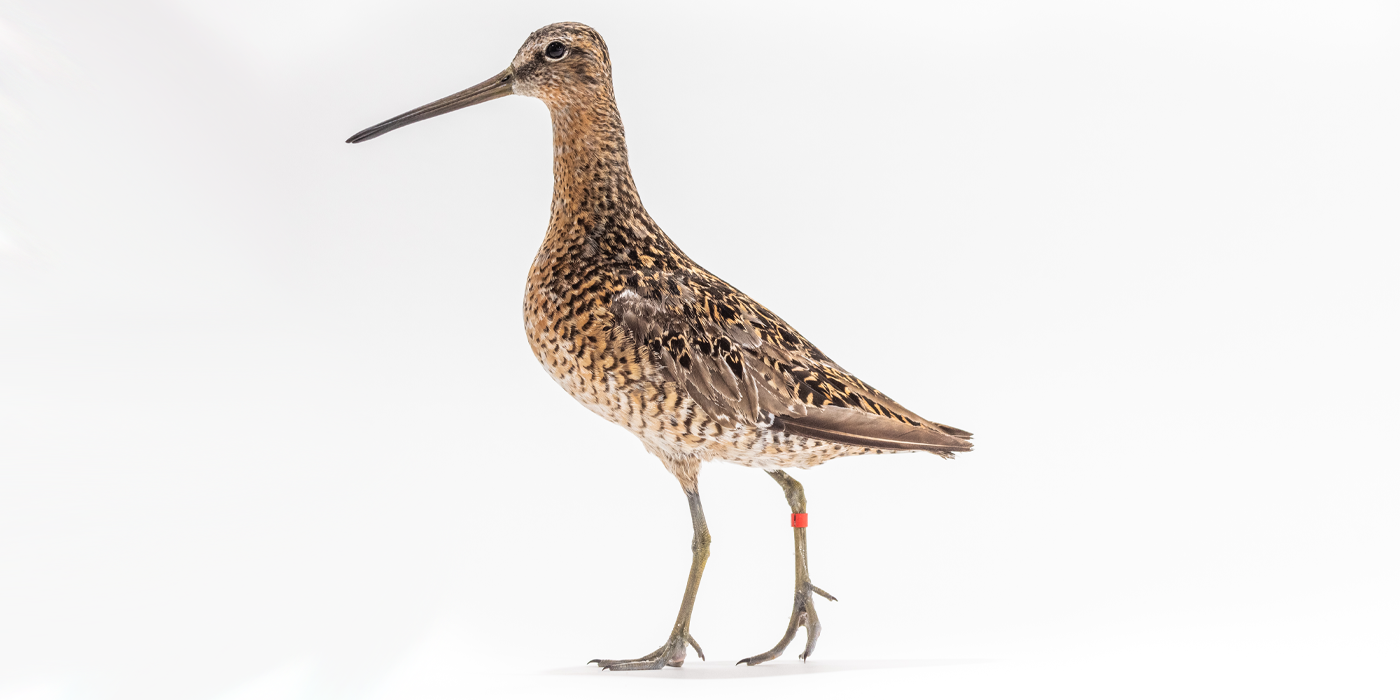Physical Description
Size
Native Habitat
In the summer, they nest in northern marshes, bogs, wet meadows, and coastal areas where boreal forests transition to tundra. Despite nesting in wet areas, their nests are usually away from the water’s edge. In the winter, they are found in coastal environments, especially tidal mudflats and a range of manmade habitats like shrimp farms. Wintering dowitchers are more likely to be seen in saltwater environments than long-billed dowitchers, which tend to prefer freshwater environments.
Migratory birds, short-billed dowitchers travel between their breeding grounds in Canada and Alaska and their wintering grounds along the coasts of southern North America, northern South America, and Caribbean islands. There are three recognized subspecies that are geographically separated in the breeding season (Alaska, western/central Canada, and eastern Canada), but may mix in the non-breeding season.
Lifespan
Communication
Food/Eating Habits
Sleep Habits
Social Structure
Reproduction and Development
While short-billed dowitchers spend their winters on warm coasts, they nest in the far north, typically far from the shorelines. Pairs are often monogamous across breeding seasons, but they arrive to the breeding grounds separately. Males court females by calling from tree branches and performing acrobatic song flights.
Short-billed dowitchers build their nests on the ground; their nests are simple bowls in moss or grass lined with soft grasses and leaves. The mother lays three or four pebble-colored eggs and then both parents take turns incubating the eggs for the approximately three weeks until they hatch. As in many closely related species, the female leaves the young before the male does. The male undertakes most of the hatchling care by leading them to food and helping protect them, but the chicks are responsible for feeding themselves. Males remain with the chicks until they are able to fly.
Conservation Efforts
Help this Species
Less is more. Cut down on the demand for resources by consuming less. Buy only what you need, and look for pre-owned or repurposed items before purchasing something brand new.
Practice ecotourism by being an advocate for the environment when you’re on vacation. During your travels, support, visit or volunteer with organizations that protect wildlife. Shop smart too! Avoid buying products made from animals, which could support poaching and the illegal wildlife trade.
Organize or attend a stream, river, lake or other waterway cleanup in your area to preserve aquatic habitats for local species.
Avoid single-use plastics, such as plastic bottles, bags and utensils. Choosing reusable options instead can help reduce plastic pollution.
Conservation starts with you! Join a citizen science project where you can help collect valuable data for scientists. Encourage your friends and family to get involved too.
Try fundraising for conservation organizations in new and fun ways. You could donate your birthday to conservation, or host a bakesale to benefit wildlife!
Protect local waterways by using fewer pesticides when caring for your garden or lawn. Using fertilizers sparingly, keeping storm drains free of litter and picking up after your pet can also improve watershed health.
Save water by switching to low-energy appliances, fixing leaks and turning off faucets when they aren't in use.
Smithsonian's National Zoo and Conservation Biology Institute. (n.d.). Short-billed dowitcher. Retrieved January 3, 2026, from https://nationalzoo.si.edu/animals/short-billed-dowitcher



